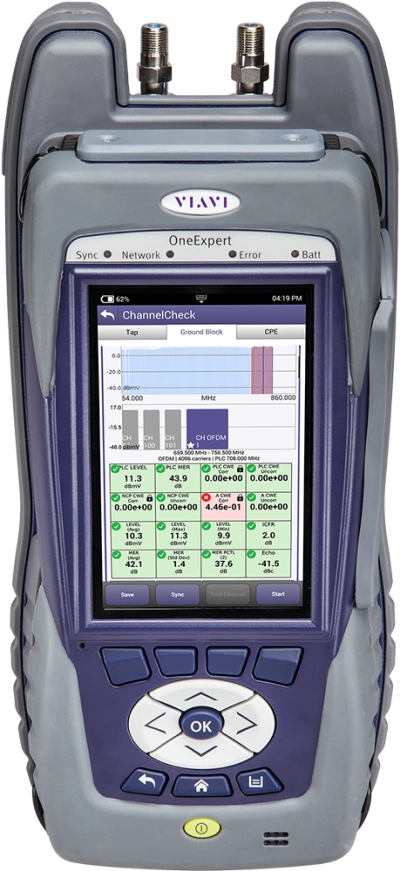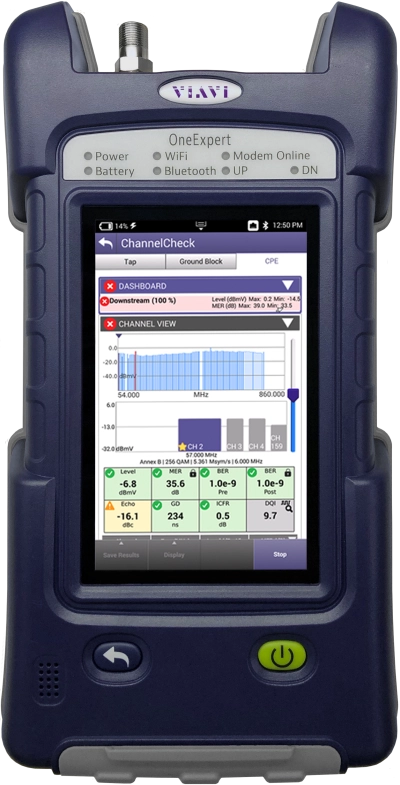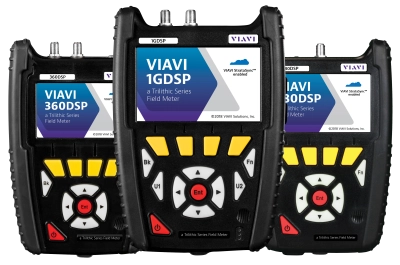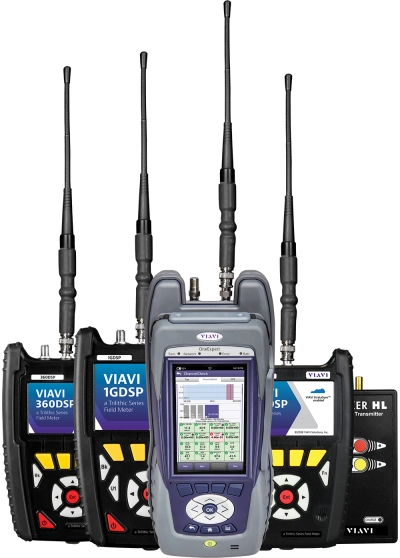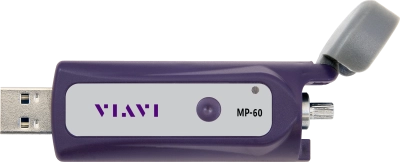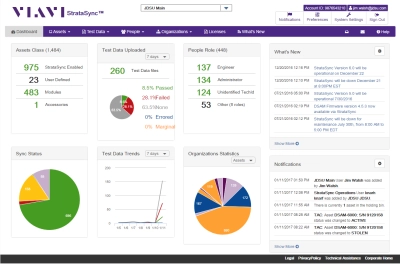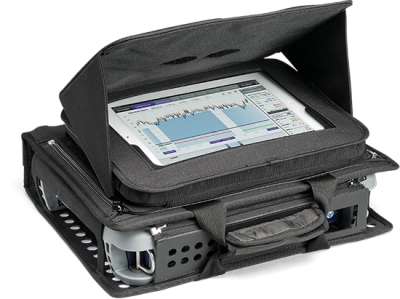DOCSIS 3.1 Test Equipment for Contractors
Cost-effective, durable, and accurate DOCSIS 3.1 test equipment designed with Contractors in mind.
Industrious contractors need advanced functionality housed in durable and reliable packages to withstand the high service levels and diverse environments they are likely to encounter. Rugged construction, water and impact resistance, and field replaceable batteries are some of the features that provide additional contractor confidence in their DOCSIS testers.The best value can be found in DOCSIS tools that are versatile, user-friendly and “future-proofed” through service plans and software subscriptions with easy upgradability that allows the DOCSIS 3.1 test equipment to grow along with the technician’s skill set and needs.
Продукты
-

OneExpert CATV (ONX-620, ONX-630)
The OneExpert CATV signal analysis meter platform makes every technician an expert by verifying network performance...
-

OneExpert DSP (ONX-220)
Fast, simple, versatile, and affordable, the OneExpert DSP (ONX-220) is a powerful installation/service meter.
-

DSP Series Meters
Robust and compact DOCSIS 3.1 installation and service meters for cable service providers and contractors.
-

Home Leakage Test Kit
Tighten up the home coaxial network with this kit, finding leaks using the technician's (DSP or ONX) signal...
-

P5000i Видео микроскоп
Видеомикроскоп для автоматического осмотра и анализа разъемных соединений в ВОЛС позволяет получать результаты по...
-

Миниатюрные измерители мощности USB 2.0 MP-60 и MP-80 с поддержкой FiberChek Pro
Измеряют оптическую мощность при подключении к настольному ПК или ноутбуком через порт USB 2.0.
-

StrataSync
StrataSync — облачное решение, обеспечивающее управление измерительными приборами VIAVI, их настройкой и...
-

VSE-1100
The VSE-1100 is the industry’s first converged digital spectrum video analyzer and noise-troubleshooting platform...
Learn more about DOCSIS 3.1
Cutting Edge DOCSIS 3.1 Test Equipment from VIAVI
The DOCSIS equipment that originated with the earliest cable networks has evolved over the past 40 years to reach performance levels never imagined when coaxial cable was simply a one-way delivery conduit for multi-channel television services. This fundamental architecture continues to be re-invented to ratchet the delivery speed and throughput that keeps cable contractors persistently challenged and occupied.
DOCSIS testers have continued to progress as well to ensure all aspects of OFDM and other innovations can be covered sufficiently. The right DOCSIS 3.1 test equipment can empower the contractor to accurately and expediently provide quality service as test regimes continuously change. Thankfully, the DOCSIS tools from VIAVI collectively and flexibly cover the test requirements of today’s DOCSIS 3.1 landscape and are more diverse and powerful than ever.
Overcome DOCSIS 3.1 Test Challenges with VIAVI
The versatility of DOCSIS 3.1 has extended the life of existing coaxial cable networks by providing blazing speed and throughput comparable to fiber optic networks. The continuous improvements to DOCSIS since its introduction in 1997 have revolutionized the cable industry, while also creating new challenges and opportunities for contractors.
To keep up with the latest developments in DOCSIS 3.1 test equipment and maximize return on investment (ROI), cable contractors need tools that are cost effective, durable, efficient and accurate. This tall order for DOCSIS testers can be met by prudently selecting the right combination of available DOCSIS equipment.
With DOCSIS 3.1, the same physical cable that once carried select television channels to individual subscribers is now capable of downstream speeds of 10 Gbps and upstream speeds of up to 2 Gbps. Orthogonal frequency division multiplexing (OFDM) and low density parity check (LDPC) forward error correction are two of the innovations that have made this breakthrough possible. OFDM utilizes multiple subcarriers with a low bit rate to transmit signals simultaneously, orthogonal to one another.
OFDM has enabled Quadrature Amplitude Modulation (QAM) to become more efficient, reaching modulation of 4K or more that provides significantly higher levels of throughput in the same amount of spectrum, when compared to DOCSIS 3.0.
The distinction between DOCSIS 3.1 throughput and bandwidth is important because it can establish a useful performance baseline. Whereas bandwidth is the potential volume of data that can be transmitted over a given time period (Gbps), throughput is the actual rate of data transferred or the measured results in operation.
Narrowing the gap between bandwidth and throughput can be a realistic objective for contractors armed with DOCSIS testers that quickly and accurately diagnose issues like ingress and cable damage that lead to compromised performance and dissatisfied customers. The contractors can in turn optimize their own throughput by minimizing diagnostic time and repeat trouble calls.
In the earliest days of cable networks, before the arrival of DOCSIS technology, communication over coaxial cable networks was a one-way street between the operator and customer. Despite the simplicity of these early systems and the limited number of failure modes, the lack of insight led to cable contractors arriving with only an initial customer call to support their investigation.
The rapid two-way communication across these lines today has enhanced DOCSIS 3.1 diagnosis utility by remotely providing clues like high modulation error rates or low cable modem signal levels that can be detected proactively from the service provider location.
Remote diagnostic capabilities will never fully supplant the role of the contractor in issue detection and resolution, although the scope and precision of remotely garnered data will continue to improve. Damage to cabling or equipment and severe transmission issues still require a physical presence and troubleshooting prowess. The next level of DOCSIS 3.1 diagnosis utility is found only in high level DOCSIS testers that can address the myriad of issues brought about by the complexity of modern services.
The OneExpert CATV signal analysis meter includes the rugged and future-proofed features and attributes that contractors covet in an advanced DOCSIS tester known for exceptional speed, power and ease of use. Precise OFDM-A upstream signal analysis makes the OneExpert one of the most advanced DOCSIS testers on the market. Advanced functionality includes ingress “heat mapping” using the Ingress Expert mode, with the capability to perform downstream and ingress testing simultaneously. A return signal generator with loopback can be used to measure and align network gain or loss.
WiFi connectivity for the OneExpert enables quick connection and synchronization of test results to the cloud via StrataSync. The OneExpert meter can also verify signal and availability of 2.4GHz and 5GHz external WiFi networks. Dual diplex filters allow the meter to adjust to the current network configuration and the AutoChannel feature automatically detects the current channel lineup. The OneExpert utilizes a common workflow model, combined with StrataSync and the Mobile Tech app to match the right test to each job.
Among the DOCSIS testers available to contractors today, rugged signal level meters such as the DSP Series are among the most versatile and dependable for any basic cable installation and servicing applications. The 180 DSP meter can perform DOCSIS 3.1 test functions including OFDM signal analysis, QAM carrier measurements and forward spectrum measurements. Frequency response can be scanned and plotted simultaneously for all channels in the lineup.
DSP meters provide an exceptional value for contractors through an affordable price point and intuitive features and interfaces to make the job run smoothly and efficiently. The 180 and 360 DSP signal level meters are designed to facilitate fast installation through intuitive color touchscreens, auto testing apps and simple pass/fail indicators. They even include a built-in flashlight for occasions when service in dimly lit spaces is required. The 1G DSP meter combines DOCSIS 3.1 testing, CATV, Gigabit Ethernet and optical network testing functionality.
A hosted, cloud-based solution enhances the power and versatility of DOCSIS testers with an all-encompassing option for instrument firmware and licensing updates, rapid test capability deployment and remote contractor interface and management.
The computing and memory prowess of the cloud provides a useful avenue for automating and standardizing test routines, managing assets and quickly uploading completed test results to reduce the contractor’s paperwork burden. StrataSync requires no annual subscription and provides instant notification to users when instrument options and firmware updates become available.
The VSE-1100 is the first integrated digital spectrum and video platform for service layer to physical layer testing that has been designed from the ground up to address the specific needs of cable applications. The VSE-1100 is also the smallest and lightest device of its kind on the market with the portability and durability to meet the stringent demands of cable contractors. The unmatched upstream troubleshooting and verification makes every user an instant expert and reduces MTTR. The VSE-1100 is also an effective DOCSIS tester, capable of DOCSIS 3.1 OFDM carrier identification and measurement and onscreen display of spectrum and MER measurements across all channels.
The prevalence of WiFi in the home has led to an ever-increasing volume of WiFi-related calls for contractors. To supplement the contractor’s DOCSIS 3.1 test equipment arsenal, accessories designed specifically for this application can provide a whole-home view of WiFi performance and throughput that fully integrates with DOCSIS tools such as OneExpert.
WiFi Advisor, when paired with an iPad to provide a graphical interface, can diagnose coverage problems, noise from adjacencies with strong signal strength and the utilization issues inherent to the crowded WiFi environment. SmartChannel Wizard intelligently assesses and presents the performance of all channels based on these common issue categories and provides recommendations to the user.
Inspecting and certifying the fiber end face is an important function for contractors and technicians. With a premium on space and portability, a fiber microscope that is compact and capable of providing reliable pass/fail results adds utility to any tool set. The P5000i fiber microscope is conveniently equipped with a USB cable interface that can be connected to a laptop, mobile device or other VIAVI test solutions.
Despite the compact size, the P5000i can interpret preconfigured criteria to provide instant pass/fail and grading results for fiber end faces that can aid contractor troubleshooting efforts and eliminate guesswork. Fibers are automatically centered so the image is clearly visible mid-screen in either of the high or low magnification settings.
Detecting signal leakage at the user location requires a high level of sensitivity to ensure shielding integrity and lack of interference from LTE signals has been confirmed. Ingress into the cable system can prevent DOCSIS 3.1 from performing effectively at higher orders of modulation. The Seeker HL is a low-cost DOCSIS tester with sensitivity up to 0.1 uV/m at 138 MHz. An integral antenna can detect very small leakage sources from within the home and an audible tone will indicate proximity to leaks. Pressure testing with the Seeker HL can also be performed using the OneCheck automated processes.
Time Domain Reflectometry (TDR) might be considered the electrical “cousin” of OTDR, emitting low-voltage electrical pulses rather than laser light pulses, then using the reflected signal impedance to ascertain the position and magnitude of loss events or interruptions along the cable run. TDR technology is ideal for DOCSIS testers, providing an efficient mechanism for cable service providers and contractors to pinpoint breaks or fault locations with no inherent blind spots. The DSP TDR uses “step” technology to continuously send and monitor signals. By uploading test results to the StrataSync cloud-based solution, the contractor can instantly document job completion and reduce time to payment.
Learn more about DOCSIS 3.1 from VIAVI today!
Are you ready to take the next step with one of our DOCSIS 3.1 test products or solutions? Complete one of the following forms to get going:
Поддержка на каждом этапе работы
Мы оказываем техническую поддержку, предоставляем услуги, программы обучения и все необходимые материалы. Наша деятельность направлена на максимальное повышение отдачи от ваших капиталовложений в систему VIAVI.
Спросите у специалиста
Обращайтесь к нам для получения дополнительной информации и ценовых предложений. У нас есть специалисты, готовые дать правильный ответ на любой ваш вопрос.

